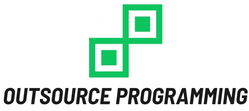Are you in the fast-paced world of software development, where collaboration knows no boundaries? As teams span across continents and cultures, language barriers can often become a roadblock to seamless communication. In this blog post, we will delve into the importance of effective communication in global software development and explore strategies to navigate through linguistic challenges with finesse. Let’s embark on a journey to unlock the secrets of fostering smooth interactions in multilingual teams!
Understanding the Importance of Communication in Software Development
Effective communication is the cornerstone of successful software development projects. In a global industry where teams are often dispersed across different countries and time zones, clear and concise communication is key to ensuring project success. Developers must be able to articulate their ideas, share feedback, and collaborate seamlessly with colleagues from diverse linguistic backgrounds.
Misunderstandings due to language barriers can lead to errors in coding, delays in project timelines, and ultimately impact the overall quality of the software being developed. It’s crucial for team members to communicate openly, ask questions when needed, and seek clarification when instructions are unclear.
Communication tools such as video conferencing, instant messaging platforms, and project management software play a vital role in bridging language gaps among multilingual teams. By leveraging these tools effectively, developers can enhance collaboration and ensure that everyone is on the same page throughout the development process.
In today’s fast-paced software development landscape, effective communication isn’t just a nice-to-have—it’s a necessity for delivering high-quality products efficiently. Clear communication fosters teamwork, boosts productivity, and helps mitigate potential misunderstandings that may arise due to language differences.
Strategies for Overcoming Language Barriers
Language barriers can present challenges in global software development teams. However, there are effective strategies to overcome these obstacles and foster better communication among team members from diverse linguistic backgrounds.
One key strategy is to utilize technology tools such as translation software or multilingual project management platforms. These tools can help bridge the gap between team members who speak different languages, enabling smoother collaboration and clearer understanding of tasks and requirements.
Another approach is to establish clear communication protocols within the team. Setting guidelines for language use, ensuring everyone has access to language resources, and encouraging open dialogue about language preferences can go a long way in improving communication effectiveness.
Regular check-ins and status updates can also help mitigate misunderstandings caused by language barriers. By providing frequent opportunities for clarifications and feedback, team members can address any issues promptly and ensure alignment on project goals and objectives.
Proactive measures like leveraging technology tools, establishing clear communication protocols, and fostering open dialogue are essential strategies for overcoming language barriers in global software development teams.
Tips for Effective Communication in Multilingual Teams
Working in a multilingual team can be challenging, but it’s also an opportunity to learn and grow. Here are some tips to help you communicate effectively in such diverse environments.
Make sure to clarify expectations from the beginning. Setting clear goals and outlining responsibilities can prevent misunderstandings later on.
Utilize technology to your advantage. Tools like translation apps or project management software with language support can facilitate smooth communication across different languages.
Encourage open dialogue and active listening among team members. Create a safe space for everyone to express their thoughts and ideas without fear of judgment.
Embrace cultural differences as strengths rather than obstacles. Diversity enriches the creative process and brings unique perspectives to problem-solving.
Conclusion
Embracing diversity in language and culture is key to navigating language barriers in global software development. Effective communication is the foundation of successful teamwork, especially in multilingual environments. By understanding the importance of clear communication, implementing strategies for overcoming language barriers, and following tips for effective collaboration in multilingual teams, software developers can enhance productivity and foster innovation on a global scale.
In today’s interconnected world, embracing linguistic diversity not only enriches the software development process but also promotes a more inclusive work environment where individuals from different backgrounds can thrive. By valuing diverse perspectives and leveraging each team member’s unique skills and experiences, companies can drive creativity and achieve greater success in global projects.
By recognizing the challenges posed by language barriers and proactively addressing them through effective communication strategies, software development teams can break down silos, build stronger relationships across borders, and deliver exceptional results that transcend cultural differences. Embracing linguistic diversity as a strength rather than a hurdle is essential for thriving in the dynamic landscape of global software development.


Leave A Comment Cancel reply